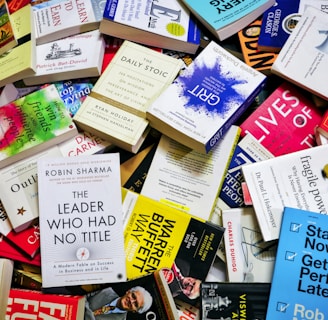Book Covers and Marketing Your Works
So, you already have a story idea or your non-fictional topic of interest planned and want to design a book cover, huh? Well, let's take a step back and see where you can go wrong before even starting this long-anticipated process.
Garvdeip Singh (1st year BA student)
5/7/20243 min read


The question you have to ask yourself is thus: "Is my final draft completed yet?". If the answer is a resounding "no" as it usually tends to be with new and overexcited writers -or even old and overexcited writers- then what you need to do is, sadly, finish your final draft first. It's even better if your book has gone through peer review and developmental editing and is ready to be published.
This is because a book changes dozens of times, as many of you may already know, and there is always a possibility for your cover image and elements, whatever they may be, to change. This is less of an issue with non-fictional stories, where, if you write about cognition, then the elements of it are unlikely to change. However, in fiction, these things can be very much a possibility, forcing the author to either commission a new cover or forcefully keep their stories from their full potential to utilize their covers, both of which are a detriment to the writer.
Now, if you've done all of this and your book is all but done, here is the promised design talk. The key to maximizing readership is catching their eye, and not at all like a sore thumb. Studies show that almost 50 - 60% of readers pick up books based on covers alone. The mantra to remember here is 'simplicity. ' A simple and elegant cover is better than a cover with entirely too much going on. However, don't mistake simplicity for minimalism, as they are entirely separate things.
Now, before you pick up your pitchforks, I am not saying a "messy" or "minimalist" cover won't sell, not at all! However, what you need to keep in mind is that they work FOR the story itself, and even then, there is an art to it, a subtle elegance.
As a reference, you may look at George Orwell's 1984 or if you want to look at "complex" covers look at Jay Kristoff's masterful covers such as "Empire of the Vampire" or "Empire of the Damned". The point is that you ought to make a cover that goes well with your text. Now, before you say, “That’s as obvious as can be, Captain Obvious!” there is a method to go about that as well.
When deciding on a cover, think of what you want the reader to associate your book with. A character like Harry Potter? A setting like Animal Farm? An animal or creature like The Power of Five? Or something abstract that works internally with your story? Once that is done, you decide on a colour pallet. Colours tend to play an even more vital role in abstract covers or covers that use solid colour backgrounds, as there is no structure or scenery to help the readers “get the vibe” of a book.
Once you have this cohesive plan, put it together or propose it to a professional and see where that leads you. Don’t expect it to be exactly how you had imagined it, as it usually takes a couple of revisions to get it right. After this, forget that you wrote the story and just ask yourself if you’d buy the book just based on the cover. Ask your friends this as well. If the answer is yes at the end of it all, congratulations! You now have a good cover.
In the end, remember, these are just the bare-bones basic guidelines. You ought to do what feels right, it may just work out! Just remember, you liking a cover won’t always mean that people love it as well, so sometimes you may have to sacrifice one thing or the other. Now go on ahead and create some books and book covers!
Because Every Legal Mind Deserves a Great Conversation.
Legaltea.in@gmail.com
+91 6284295492
MSME Certified
© 2025 Legal Tea. All rights reserved.


